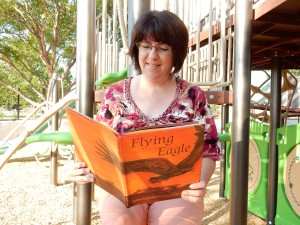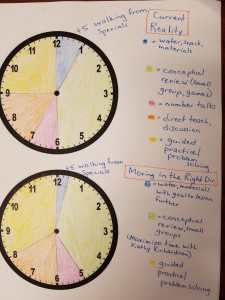
Teaching 3rd grade, I feel there are two main goals: solidify number sense and read, read, read. The math can feel a little frustrating if number sense hasn’t been gained as the curriculum moves along. I bring in games, review, small groups, more games, and more review. I still feel some frustration with wishing I could just focus on number sense for the small fries who desperately need to focus on the basics. However, I work as hard as I can to reach and teach.
Motivating students to read is my candy. I use several avenues. If students have an interest, I find matching books in multiple genres. They learn quickly that they can write a desired book, author, or topic on a post-it and I will try to fulfill that request.
Read Across America
I use “Read Across America,” an idea inspired by my team when I was student teaching, with my personal twist. The original plan gave the students prizes when a Reading Log page was completed, plus showed a graph of how many pages each student finishes. Every 4 pages, a state was colored on a United States map. There was a competition between the classes to see who could color the most states within the year. No one is competing with my class, which means it needed an additional driving force. When a student has 4 stars on the graph, he or she colors in any state. Then I purchase a matching state book for our classroom library, plus a book set within this state, hopefully with a focus on that student’s interests. These two books receive a dedication sticker to the student and reside in his/her personal book box before going into the library. My goal here is to leave a strong impression that reading truly does take you places – always a Seuss fan!
Bluebonnet Book Club
My favorite program right now is the Bluebonnet Nominee Club. Each year in Texas, 3rd through 5th graders at registered institutions, receive an opportunity to read (or hear read aloud) a minimum of 5 of the 20 Bluebonnet Nominee books in order to vote for the personal favorite in January. After reading each book, they must complete a form which proves the book was read. The Texas Bluebonnet Award is presented to the author of the winning book.
In my school, the librarian presented the 20 nominees to classes. She has a graph within the library for each class. My students were excited about the books which gave me an idea. I offered for each student in my class to choose their top 3 books they wished to read, then write me a letter explaining why I should buy their top chosen book to add to our classroom library. I promised to buy 5, but ended up purchasing 9 of the 20 books. I created a “Bluebonnet Book Club” with images of each book where students received their names above each book read with a summary submission form completed. Between the school library and mine, most of my students have a Bluebonnet book in their book box at all times. Many ask for a new one, once a form has been submitted.
I love the enthusiasm and interest this program is bringing to my room. Students are enjoying sharing their opinions of each book read. I’ve just bought 5 more Bluebonnet books to keep the interest fresh.
Vultures
We also have a pair of vultures nesting on top of our school roof. The students have taken a huge interest in vultures. I’ve bought Vulture View and two other books about vultures to present to the students once Bluebonnet enthusiasm wanes. One of the books is by Sandra Markle, a favorite author of mine. I’ve made several Animoto Book Trailers which are assessible on this blog, but haven’t needed to use them yet. I need to build my collection of videos for the spring.
If you’re not moving or sleeping, consider reading. Pick up a book :).







